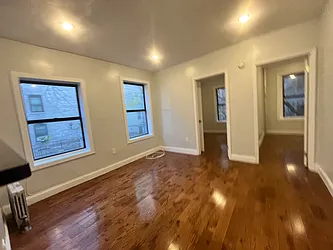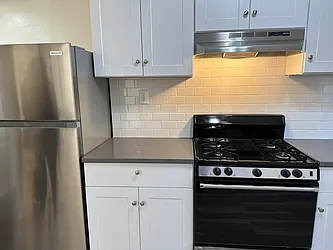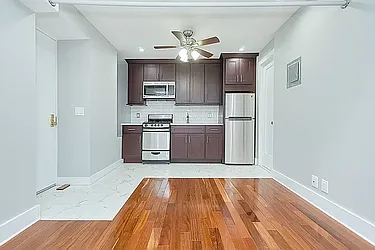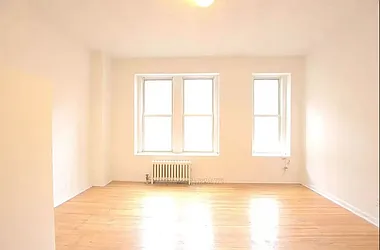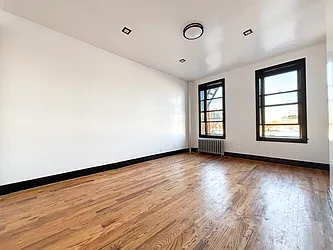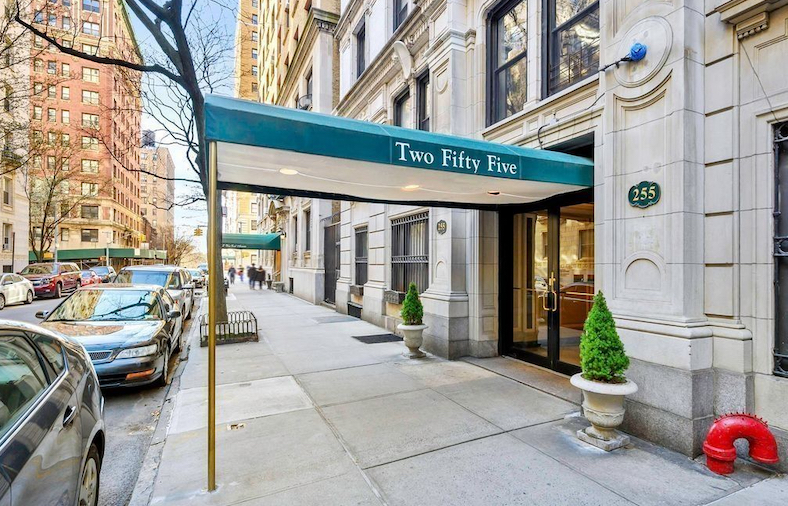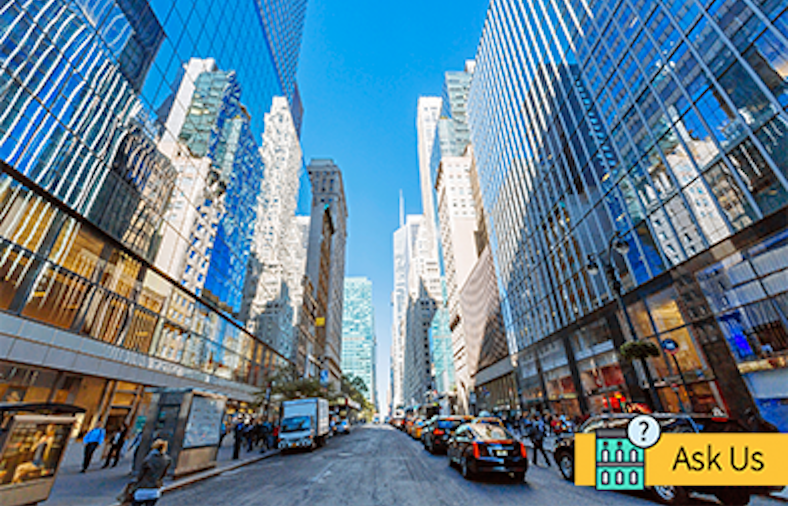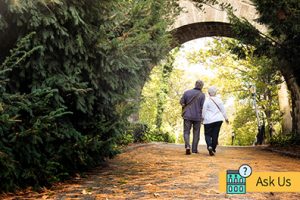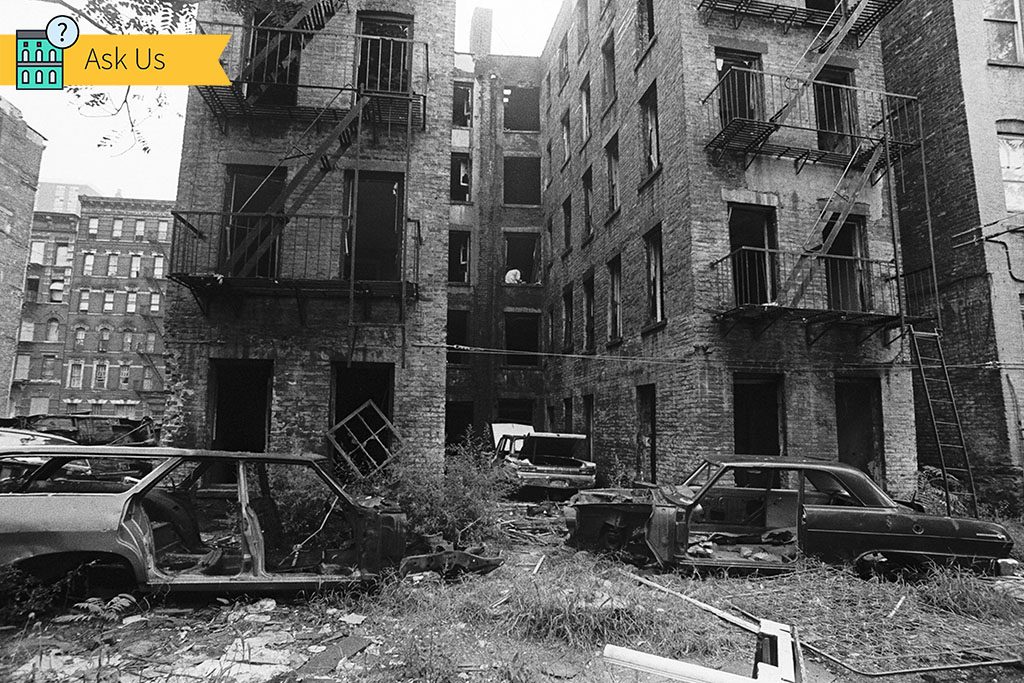
View of fire-damaged and abandoned buildings in the Lower East Side, September 1974. (Allan Tannenbaum/Getty Images)
Question: I recently left New York and moved to San Francisco. I’m appalled! It’s filthy. Homelessness is out of control. Open drug usage on the streets. The sidewalks are littered with garbage, excrement and broken glass. And it’s hard to tell where people draw the line between artistic murals and plain old graffiti. It’s like stepping back into New York 30 years ago. How did New York reverse the urban blight of the late 20th century, and why can’t other cities do it, too?
— Missing New York Every Day
Dear Missing:
The Romans called it civitas — people living and working peacefully in common purpose for the common benefit.
We might call it “city-ness” or civilization. It’s a collective sense of great purpose that New York, practically alone among U.S. cities, possesses. It’s why we have the nation’s, indeed the world’s, greatest cultural institutions, why we’re the commercial and financial capital of the world, an intellectual and artistic keystone, and why New York was able to pull itself out of its own Dark Ages.
Homelessness, drugs, crime and urban blight are not discrete problems. They are all part of the same Sick-City Syndrome. To anyone who has spent the last 30 years or so in New York, walking the streets of San Francisco, making your way along “The Nickle” in Los Angeles or driving past the tent cities of Orange County is like a bad acid flashback. How can a city function like this?
I’m going to try to answer that question in two parts — an overview and a little history here in Part I and next week in Part II a list of efforts, programs and developments that, I believe, turned around New York. Feel free to challenge …
We are living in a Golden Age of New York, a special moment of great wealth and flourishing culture, that future generations will no doubt look back upon with awe and envy. In contrast, in the 1970s and 1980s, New York was a broke, ungovernable metropolis barreling into anarchy.
The city was practically bankrupt and hemorrhaging population. Subway trains were covered in graffiti, inside and out. Crime was rampant. Women were warned to remove jewelry while walking the streets for fear that their necklaces would be ripped from their necks. Vast areas of the Bronx and Upper Manhattan were torched. Where nannies and their baby carriages gather today on the Upper West Side’s Sherman Square, drug pushers worked the spot they called Needle Park. Tompkins Square in the far East Village and Bryant Park by the main library were permanent encampments for junkies, prostitutes and drifters. People feared to wander in large portions of Central Park, even during daylight hours.
See Manhattan Rentals Under $2,500 a Month Article continues below
Beginning in the late 1970s and all through the 1980s, various public and private institutions rose up to change the direction of the city. There was no one turnaround program or event, but a thousand efforts that reached a critical mass. The state created the Municipal Assistance Corporation to set the city’s finances right. The non-profit Central Park Conservancy was founded to take over operations of the park; similar groups formed over the years for other public parks. Various business-improvement districts grew up in all the boroughs, beginning in 1976 with the Fulton Mall Special Assessment District in Brooklyn. The MTA attacked subway graffiti, and NYPD launched a crackdown on crime, especially open-air drug markets.
And, beginning with Wall Street’s great bull market of the 1980s, the city prospered. The population began to rise. And young people, who were always attracted to the city, chose to stay and raise their families here rather than move to the suburbs as generations had done before.
In short, New York became a city again.
See ‘Part II: How Did NYC Lift Itself Out of Urban Blight?‘
David Crook is a veteran journalist and author of The Complete Wall Street Journal Real-Estate Investing and Homeowner’s Guidebooks. Do you have a question about anything real estate-related in NYC? Write him at askus@streeteasy.com. For verification purposes, please include your name and a phone number; neither will be published. Note: Nothing in this column should be considered professional legal advice. If you have a legal issue, consult an attorney.
—
Got an interesting NYC real estate story or a hot tip? Send it to us at tips@streeteasy.com. (You will remain anonymous.) And hey, why not like StreetEasy on Facebook and follow @streeteasy on Instagram?
